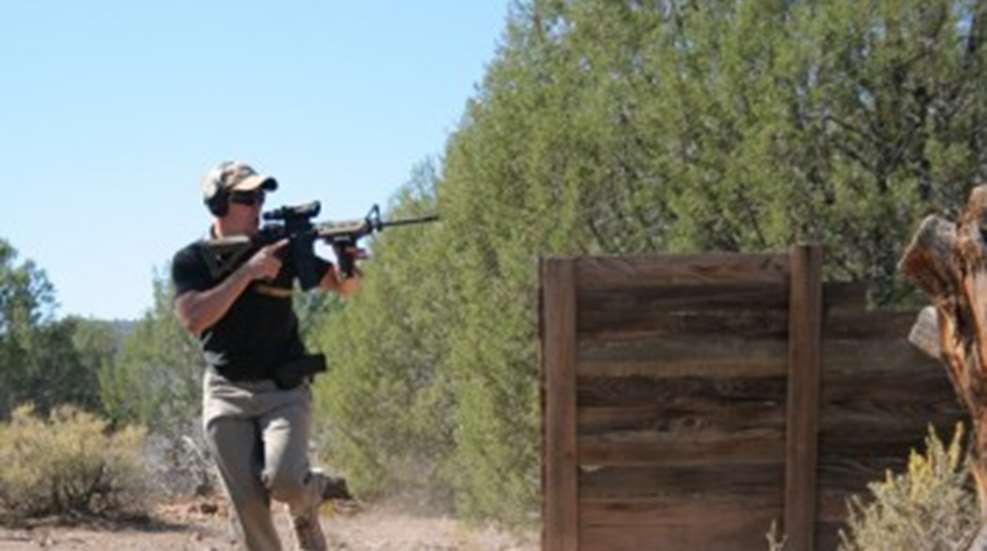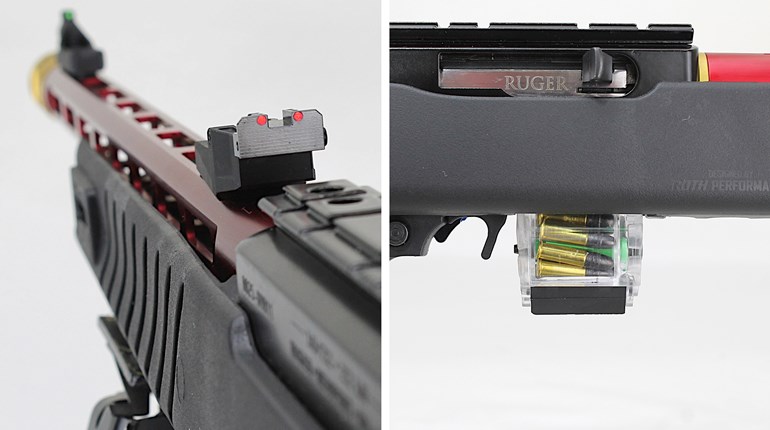
Just like any other sport, shooting is athletic and mental. It takes muscles and brain function to be successful. Both get tired when used. Just like any other sport there are exercises that will condition you for the physical and mental stress shooting brings with it. If you're just a recreational shooter who goes to the range and blasts away a box of ammunition every so often, you may not experience the physical and mental rigors that come with competition or serious practice. Shooters who regularly compete or that have attended shooting school will tell you a different story.
According to Gunsite's Ed Head, "It's been my experience that people tend to get a bit sore when training in a new activity, regardless of their level of fitness. Students may get sore in the arms, backs and shoulders, simply from manipulating their firearms. This is a little worse for carbine, rifle and shotgun shooters due to the weight and length of their weapons. Regardless of the type of class, most commonly, the legs tend to get sore or stiff simply from standing up much of the day."
Tiger McGee, who runs the Shootrite Firearms Academy, echoed Head's observations saying, "Normally what we see, even in people who work out with weights, is that hands get tired from manipulating the weapon and using too much grip pressure, plus the shoulders and upper back muscles from holding the weapon up and applying isometric tension between the arms. Even a pistol gets heavy after seven hours of training. When using firearms, you're working muscles that are normally not used in that manner, especially for extended periods of time."
Additionally, I spoke with a number of ladies who attended a two-day handgun class at Gunsite during which they fired about 200 rounds. All of the ladies said their hands were tired and that even the web of their hand—the section between the thumb and index finger—was sore. My wife was one of those students, and she complained that, in particular, the muscles in her side were especially tender.
I've attended numerous shooting schools for rifle and handgun and I have never left one where some body part was not slightly tender. And, I do a lot of shooting; probably in excess of 200 rounds per week. I also use the BowFlex for an upper-body workout program, but like most humans, probably not frequently enough. Generally, during a shooting course or during competition, my back and shoulder muscles get sore first. Some of this is due to physical exertion but mental stress is also a factor.
For the most part, any exercises you can do to strengthen your upper body, to include your grip, will be beneficial. Cardio training is just as helpful, especially if you are participating in combat pistol or 3-gun matches where running and negotiating obstacles are part of the package. Cardio training helps keep your heart rate low and your breathing less labored. A lower heart rate helps you concentrate better and the smooth intake and release of oxygen disturbs your sight picture less.
Just like with any sport, there are exercises that will target specific muscle groups to help you perform better. I've found the best exercise for shooting is dry fire. Not only does dry fire stress the actual muscles you will use when shooting, while conducting dry fire you are improving your skill at pulling the trigger while not disturbing the sight picture. This, after all, is the key to accurate shooting.
If you can conduct 20 minutes of dry fire, with a rifle or pistol, from common shooting positions every other day you will begin to see improvement—not just improvement in your ability to control the trigger and sight alignment. After about three weeks, you will notice your hands, arms and back are less tired after training session. All good firearms instructors are believers in dry fire. It is the single best activity you can do to improve your shooting. Granted, it's not all that enjoyable, but nothing prepares your body and mind for shooting like dry fire. Combined with some common upper-body exercises and cardio training, it is the solution for getting in better shape for shooting.
The last body part that needs some attention is the one on top of your neck. When you are struggling to get better hits, faster, your brain is stressed. The same is true when you are attending a firearms class or engaging in a competition. The stress to perform or learn is transferred to the muscles in your neck and back and can even manifest itself as tremors or shakes.
Max Michel, an accomplished competitive pistol shooter with blazing speed, suggests you try to clear you mind and relax. Not just relax mentally, but relax all over. Relax your back, legs, arms, hands and even your face. Eliminate the tension from your body. This may sound kind of Zen-like, but it works.
Anytime I am preparing to shoot, I go through a mental checklist to remove stress. I consider the safety issues regarding the shot or shooting by checking the gun, ammunition the target area and what's beyond. This eliminates worry about injury to me or others. I then play the shot or shots out in my head so I know what I need to do. Finally, I take a few breaths and attempt to relax my body so my movements will be fluid and smooth. This entire process might take a minute or just a few seconds, depending on the situation.
There is no real secret for getting in better shape for shooting. All you need to do is exercise the muscles—and your brain—you use when you shoot. Dry fire is the path to take because it requires you to use the muscles you actually need when you are shooting. And, it requires you to use them while trying to break a shot at the exact moment the sights are aligned on the target. The best thing about dry fire is it requires no gym membership fee, no range and no instructor. It's free!






































